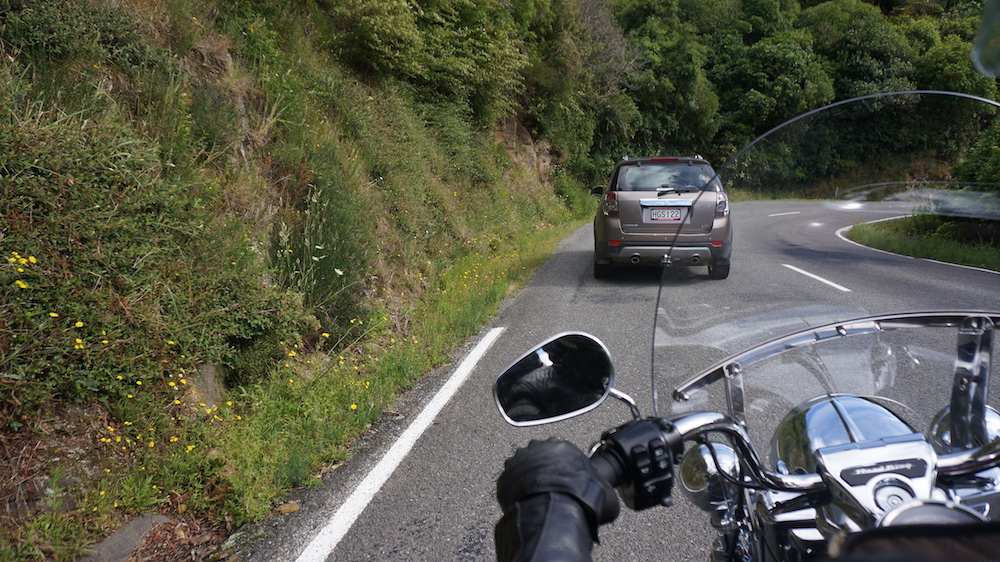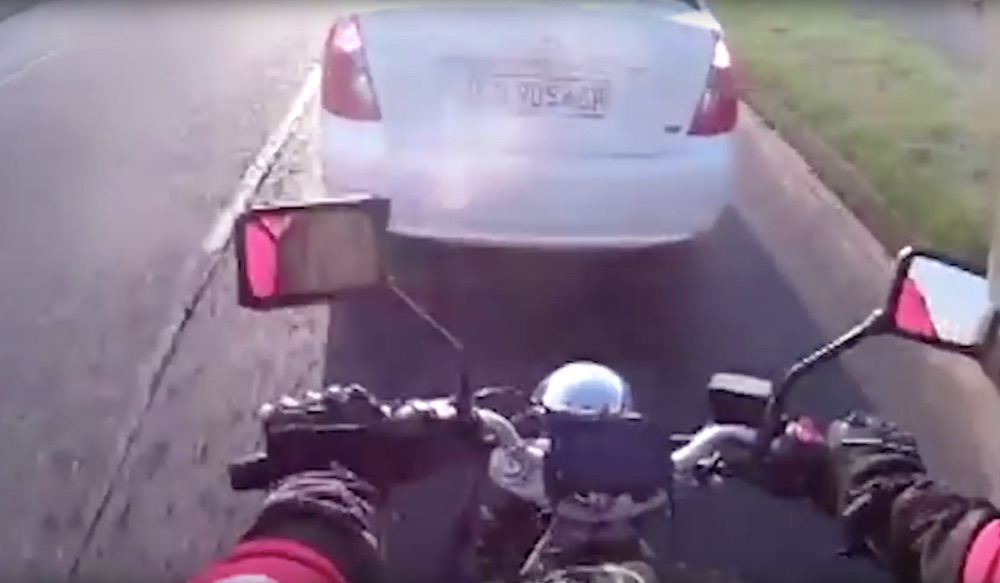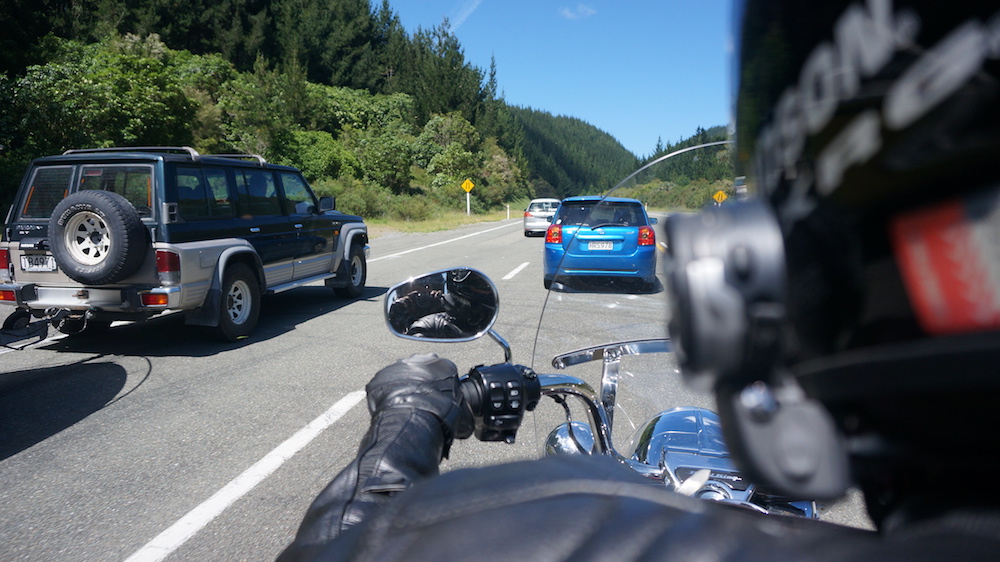A new study has found that one of the most common motorcycle crashes is riders running into the rear end of vehicles in front because they follow too closely.
The Virginia Tech Transportation Institute motorcycle crash study for Motorcycle Safety Foundation chose 100 volunteer riders to carry cameras so they could study their behaviour.
They recorded more than half a million kilometres of riding which included 30 crashes and 122 near-misses.
While the study is just the start of their real-world analysis, it did reveal the most common incident (35 crashes or near-misses) was riders crashing or just missing the rear end of the vehicle in front.
FOLLOW TOO CLOSELY?

Riders often complain about being tailgated, but there is also a tendency for riders to follow vehicles closely. I confess to doing it myself.
The reason we follow closely is because a rider doesn’t have a bonnet/hood blocking their view of the road ahead.
Car drivers can’t see about 10m of road in front of them, so their visible road gap to the next vehicle is already 10m. If they then leave a gap of visible road, that is on top of the 10m.
Riders don’t have that 10m buffer. They see all of the road in front of their front tyre, so they tend to creep up closer to the vehicle in front, erroneously believing they are leaving a reasonable gap.
We also tend to want to overtake vehicles in front of us, so we follow closely to overtake quickly.
STOPPING DISTANCES
The problem is that a car with four large rubber contact patches on the bitumen will stop a lot faster than a motorcycle with two narrow tyres.
So if a vehicle stops suddenly, a rider has a lot less stopping distance before hitting the vehicle.
Also, it only takes a moment’s inattention and a stopped vehicle that is suddenly turning across the traffic looms up on us. Check this video.
We need to leave a three-second gap when we follow a vehicle. To gauge the gap, watch the rear of the vehicle in front pass a roadside object, then count to three and your bike should then be alongside that same object.
WEAVING TO AVOID A REAR-ENDER
Another cause of these rear-end incidents is that bikes cannot weave around a wide object, such as a vehicle in front, as quickly as a car can.
Yes, you may be able to steer or counter-steer your bike quickly, but after a quick flick of the bars, it tends to stand back up again.
Try it yourself. Steer or counter-steer the bike at any speed and see how far you go before the bike wants to stop steering and run straight again.
So if you are following a vehicle closely and it suddenly stops, you have less chance of avoiding the rear end of the vehicle. That’s especially true if you are riding in the middle of the lane like in the photo below.
You can increase your chances of weaving around the vehicle if you are riding in the left our right wheel track (depending on circumstances and whether it’s a left-drive or right-drive country).
In this position, you have less distance to weave and avoid the vehicle in front.




